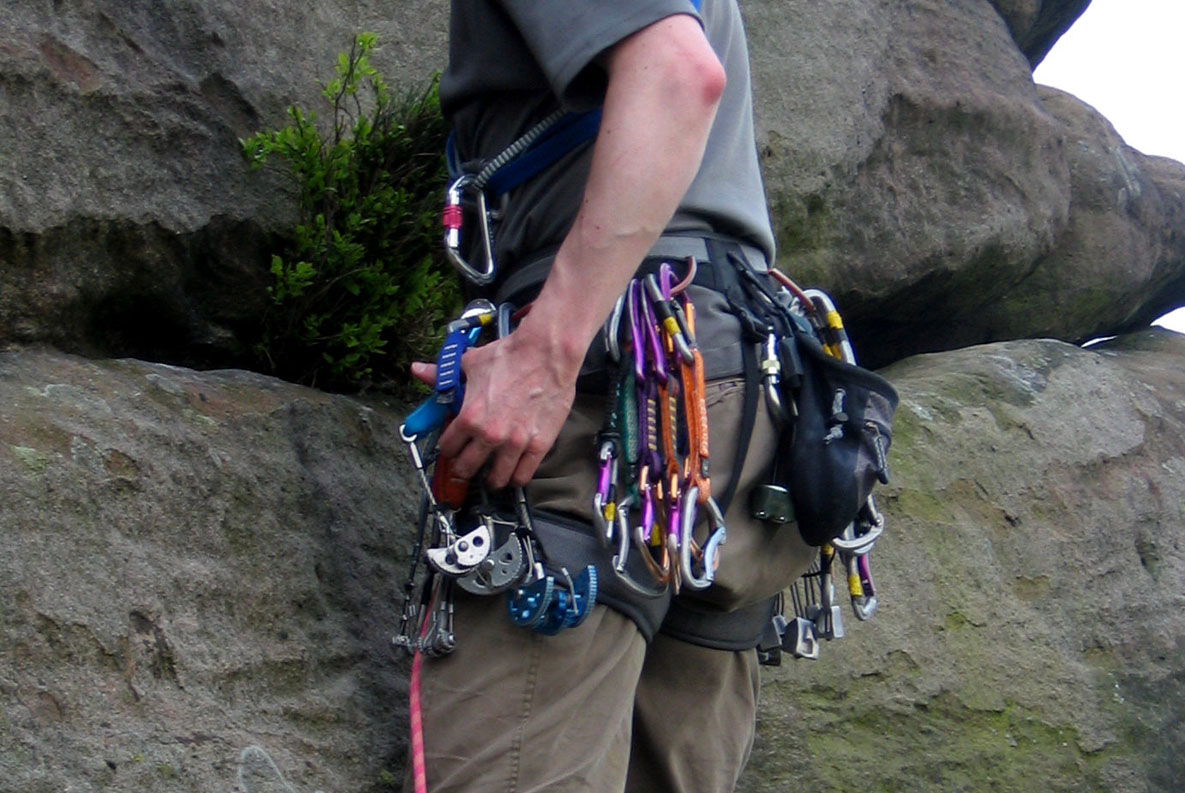This guide provides a basic overview of the steps toward becoming a competent trad leader.
Whether beginning as a boulderer, sport climber, or simply jumping straight into the traditional style, the commitment to lead trad climbing takes a small leap of faith. Given appropriate preparation, however, one should feel adequately prepared and confident upon taking the sharp end.
The path to trad leading is a journey:

1. Follow, follow, follow
Before considering trad leading, the most important step is to either find a climbing mentor and/or follow others who have more experience. By following, we mean going out with an advanced climber who can lead the routes, as you climb second and clean the gear. While cleaning, take note of the orientation of the placements, the surrounding rock quality, and the use of different techniques depending on the terrain (i.e. using an extension, slinging features, using active vs. passive pro, etc.).
2. Do your homework
Sometimes, it can be quite difficult to find a quality mentor and do as much following as desired. When not climbing, do your homework. In books or online is not an appropriate way to adequately learn how to climb, but it is a great means to study and practice mock scenarios for when you get on the real rock. Spend your time studying rock climbing knots and hitches, learning to build anchors (check out Rock Climbing Anchors by Craig Luebben), and reading tech tips by professionals.
Related: Climbing Anchors: Basic Principles
3. Practice on the ground
Before tying into the sharp end and getting on your way, spend several days doing gear placements on the ground. To do this, simply go to a location with various crack features at ground level. Practice placing nuts, cams, and even building anchors. Have an experienced climber review your placements, remembering to pay special attention to the directions of load, angles between anchor placements, and quality of rock.
4. Mock lead
Mock leading means to top-rope a climb while simultaneously trailing a second rope (i.e. the second rope is tied to a gear loop, and it is not on belay). While climbing on top rope, place gear often to simulate a real leading experience. Clip the trailing rope to the placements, paying special attention to rope drag and the prevention of walking (extend protection with slings). Have an experienced trad climber then inspect and critique your placements.
5. Start easy
Each climber has his or her own level of comfort and risk tolerance, but we recommend at least ten mock leads before doing your first trad lead. Climb well below your limit to start, and slowly work your way up the grades. Stay calm, have fun, and soak in the beauty of the traditional style!
Related:
- Gear Guide to the Best Rock Climbing Stoppers and Cams
- How to Build Your First Trad Rack: Best Gear for Getting Started








